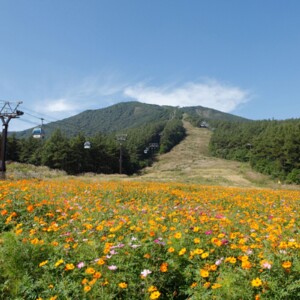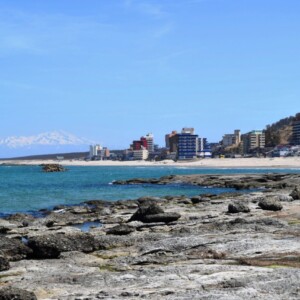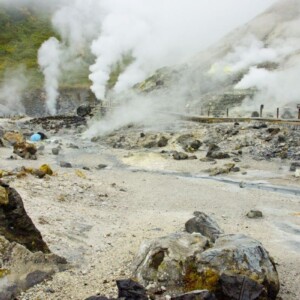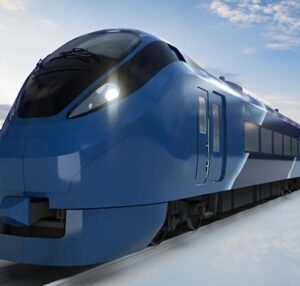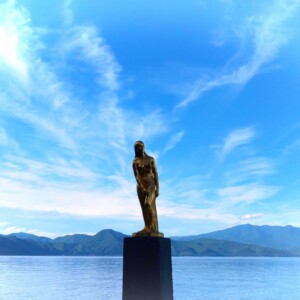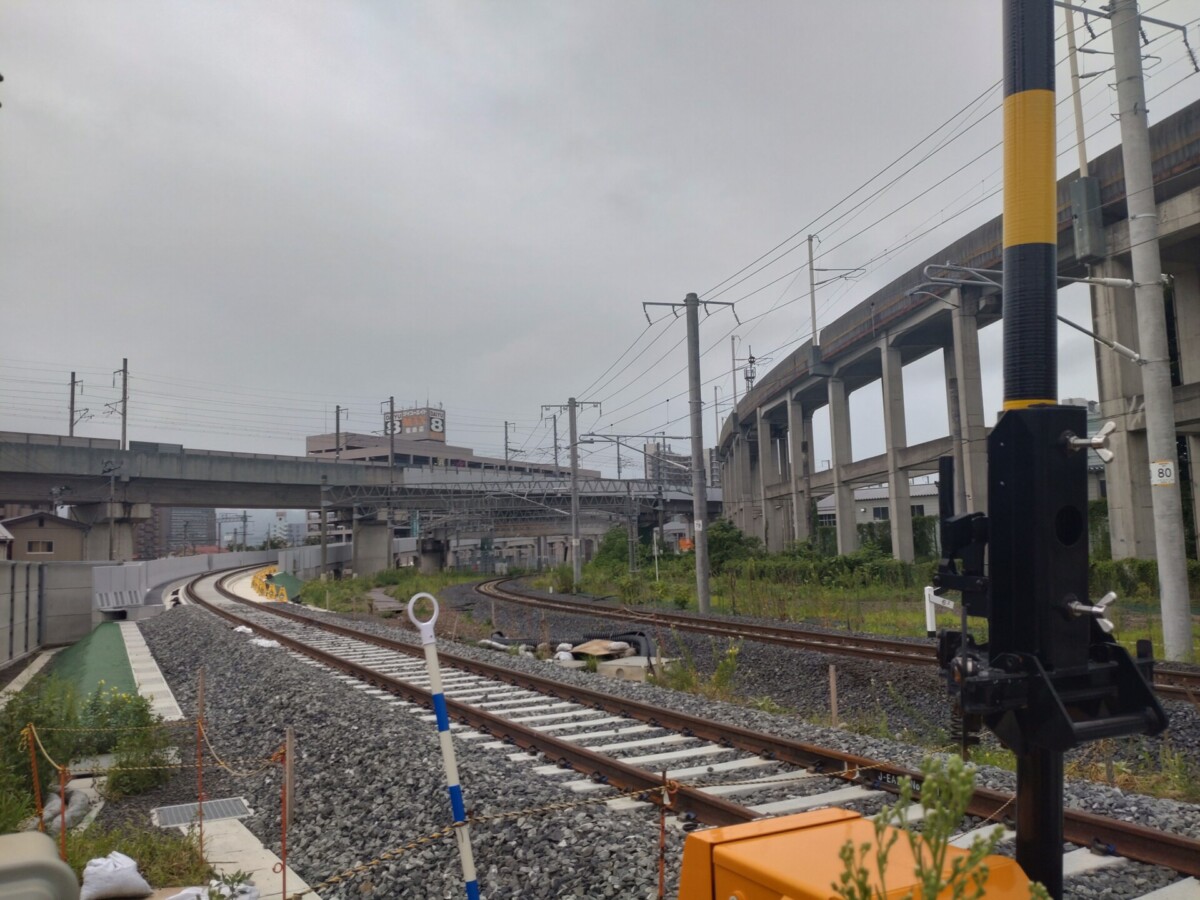
Work to expand Yamagata Shinkansen approach line at Fukushima Station [Fukushima Prefecture]
table of contents
At Fukushima Station in Fukushima Prefecture, construction is underway to add an approach track for Yamagata Shinkansen trains.
We will explain the content and significance of the construction work, including photographs of the site.
What is the approach line to Fukushima Station?
The Yamagata Shinkansen, also known as the Tsubasa , began operation in 1992.
Currently, it mainly operates between Tokyo Station and Yamagata Station and Shinjo Station in Yamagata Prefecture.
Tsubasa runs along the Tohoku Shinkansen line between Tokyo Station and Fukushima Station.
Additionally, many Tsubasa trains run in conjunction with the
Yamabiko Yamabiko mainly operates between Tokyo Station and Sendai Station/Morioka Station.
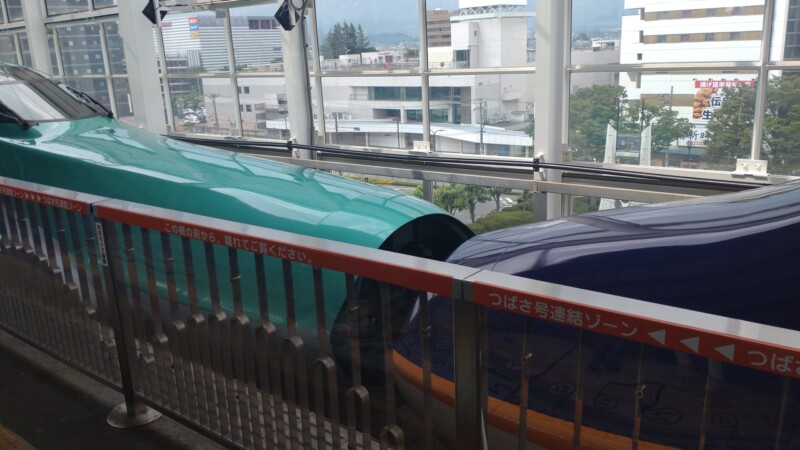
(Photographed by the author; all images below, except for Google Maps, were photographed or created by the author)
After disconnecting from Yamabiko at Fukushima Station, you can board the Ou Main Line and head towards Yamagata Station or Shinjo Station.
" Yamagata Shinkansen " is a general name for the Tohoku Shinkansen between Tokyo Station and Fukushima Station, and the Ou Main Line between Fukushima Station and Yamagata Station/Shinjo Station, and is also a common name for the train (Tsubasa) that operates in this section. There is.
Please see this article for information on how the Yamagata Shinkansen was born.
Also, be sure to check out the article about the Ou Main Line, which Tsubasa runs on.
As already explained, the outbound Tsubasa bound for Yamagata/Shinjo stops at Fukushima Station on the Tohoku Shinkansen and then transfers from the Tohoku Shinkansen to the Ou Main Line.
Of course, for the Tsubasa bound for Tokyo, the reverse is true, and you will board the Tohoku Shinkansen at Fukushima Station from the Ou Main Line.
Trains connected to Yamabiko will be connected at Fukushima Station.
is the track that Tsubasa uses to travel between the Tohoku Shinkansen and Ou Main Line tracks
What is the problem with the current approach line?
Here is a simple diagram showing the current wiring at Fukushima Station on the Tohoku Shinkansen.
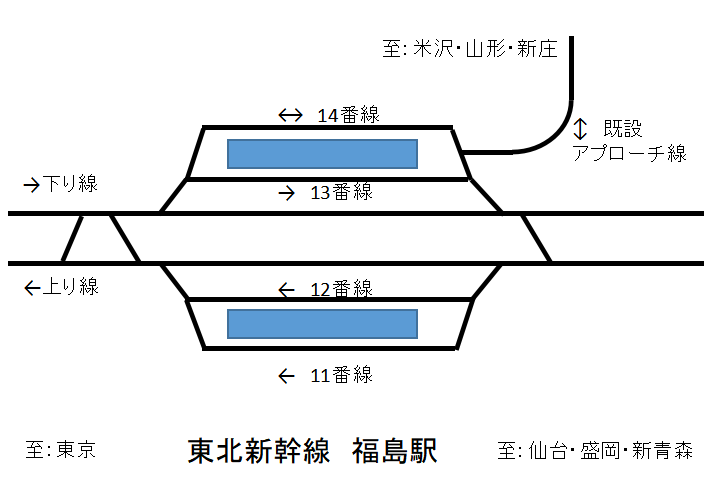
Platform 11 is the up-line platform and is designed to allow access from the Sendai direction, but it is basically not used at present.
Platform 12 is the platform for inbound trains, and any Yamabiko trains that do not connect with Tsubasa at Fukushima Station will stop here.
The two tracks between platforms 12 and 13 are for passing trains.
The Tohoku Shinkansen ``Hayabusa'' and the Akita Shinkansen ``Komachi'' do not stop at Fukushima Station, so they run along these tracks at high speed.
Platform 13 is a platform for outbound trains, and the ``Yamabiko'', which does not connect with ``Tsubasa'', mainly stops here.
And it's line 14.
I will explain the details later, but both the outbound and inbound trains of Tsubasa and Yamabiko, which is operated in conjunction with Tsubasa, must always stop on this line .
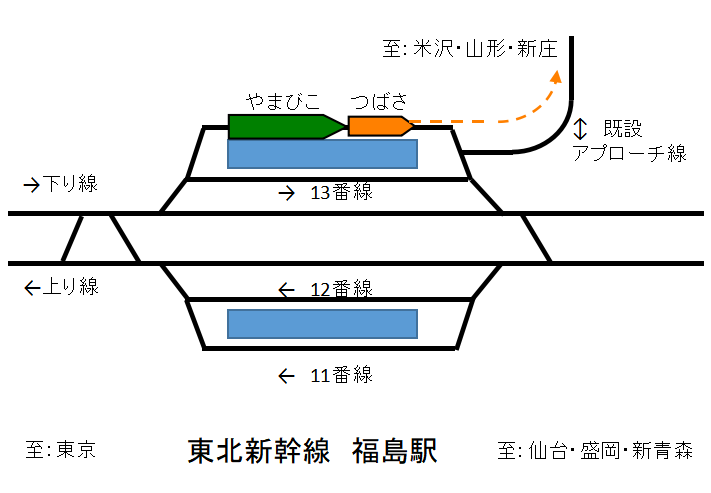
First, the outbound "Yamabiko Tsubasaha" stops at platform 14 and is separated, "Tsubasa" departs first, descends to the Ou Main Line track via the current approach line, and heads towards Yamagata. I'm heading to
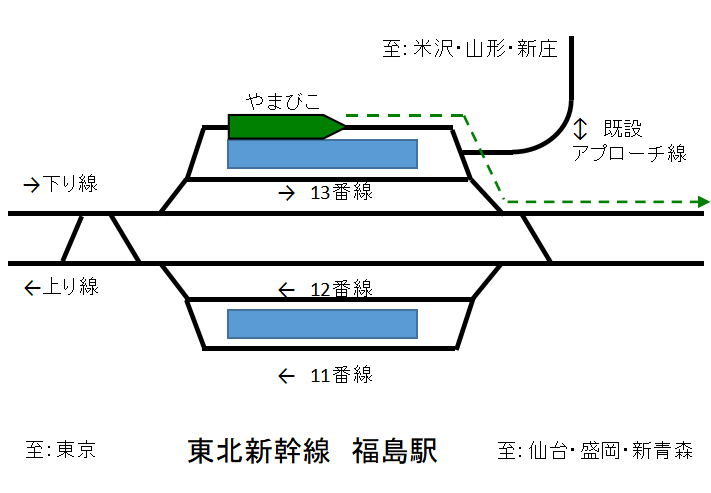
After that, ``Yamabiko'' departs for Sendai.
The problem is the up train bound for Tokyo.
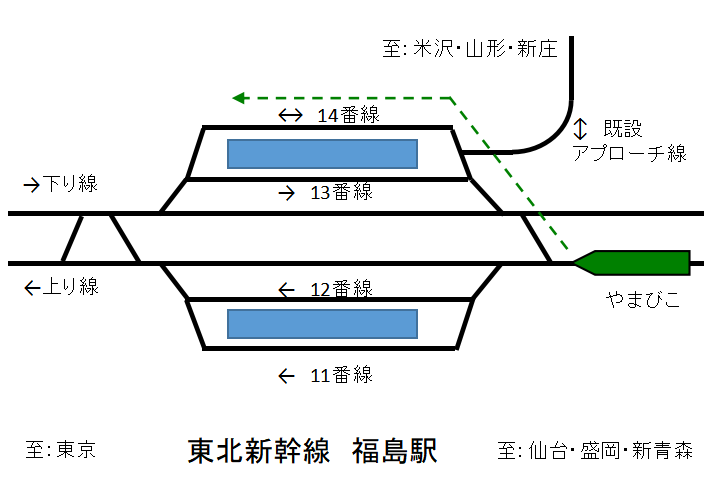
First, ``Yamabiko'' enters platform 14, crossing over from the inbound line to the outbound line.

After that, ``Tsubasa'' climbs the approach line from the Ou Main Line and enters Platform 14, connecting with ``Yamabiko.''
The approach line only connects to Platform 14 , so "Tsubasa" can only enter Platform 14, so "Yamabiko" also has to go all the way to Platform 14 and wait for "Tsubasa". .
Furthermore, ``Yamabiko'', which does not connect with ``Tsubasa'', does not need to enter platform 14, so it will stop at platform 12.
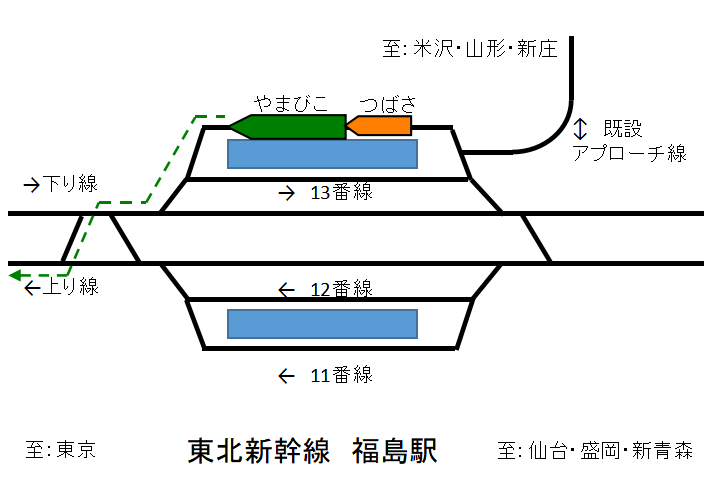
After connecting "Yamabiko" and "Tsubasa", the train crosses the down line again and transfers to the up line, heading towards Tokyo.
In the diagram above, "Tsubasa" is connected to "Yamabiko," but some trains within "Tsubasa" do not connect to "Yamabiko."
However, as I mentioned earlier, Tsubasa can only be used on platform 14.
Therefore, will cross the line as long as the inbound Tsubasa runs (whether or not it connects with Yamabiko)
The train crosses the down line once when the inbound Tsubasa runs alone, and twice when the Tsubasa and Yamabiko run together.
Of course, while an inbound train is crossing the outbound line, a downbound train cannot pass through Fukushima Station.
Therefore , due to just one location, Fukushima Station, there are major restrictions on setting the Tohoku/Yamagata Shinkansen timetable.
In addition, if the timetable is disrupted, the passing train on the outbound side will wait while the inbound train crosses the outbound line. On the other hand, the upstream ``Yamabiko Tsubasa'' waits for the inbound train to pass, and the outbound and inbound ``Tsubasa'' fight over platform 14, further increasing the disruption to the timetable.
If the timetable is significantly disrupted, the impact will not be limited to the Tohoku Shinkansen or Yamagata Shinkansen.
Joetsu Shinkansen and Hokuriku Shinkansen trains also run on the Tohoku Shinkansen line between Tokyo Station and Omiya Station.
This means that the Tohoku Shinkansen and Yamagata Shinkansen schedules will be disrupted, and as a result of that disruption being amplified at Fukushima Station, the Shinkansen schedules bound for Niigata and Kanazawa/Tsuruga may also be disrupted. .
There is also one more problem.
As explained above, the inbound ``Yamabiko'' will stop at platform 12 if it does not connect with ``Tsubasa,'' and it will stop at platform 14 if it does connect with ``Tsubasa.''
When you want to go to Tokyo on the Yamabiko train going up from Fukushima Station, the platform you should go to differs depending on the train.
There is no particular objection to the fact that this is difficult to understand
(although it may be a matter of course for people who often use large stations such as Tokyo Station or Shin-Osaka Station...).
Details of approach line expansion work
Currently at Fukushima Station, the inbound line ``Yamabiko Tsubasa'' crosses the outbound line twice, which is a bottleneck.
The reason why it is necessary to cross twice is because the current approach line only connects to platform 14 at Fukushima Station.
It would be easy to come up with a way to resolve this situation.
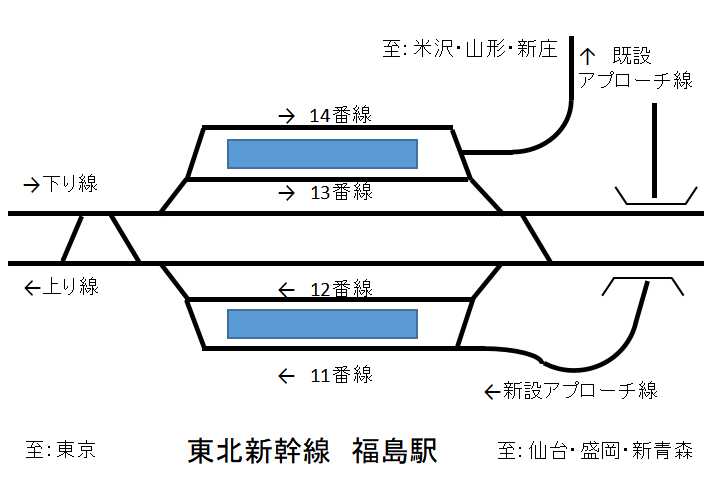
As shown in the diagram above, the current approach line can be used exclusively for the outbound Tsubasa, and can be done to construct a new approach line that connects to the inbound platform of Fukushima Station for the inbound Tsubasa
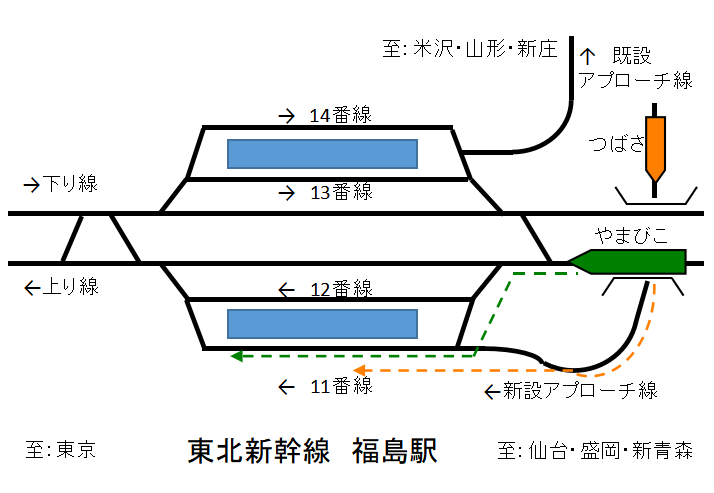
If the wiring is like this, the upbound Tokyo-bound "Yamabiko" will first stop on the Tokyo side of platform 11 and wait for "Tsubasa," and the upbound "Tsubasa" will go through the new approach line from the Ou Main Line to Fukushima. You can enter the station's platform 11 and connect with Yamabiko.
Yamabiko enters Fukushima Station, it will no longer be necessary to cross the outbound line .
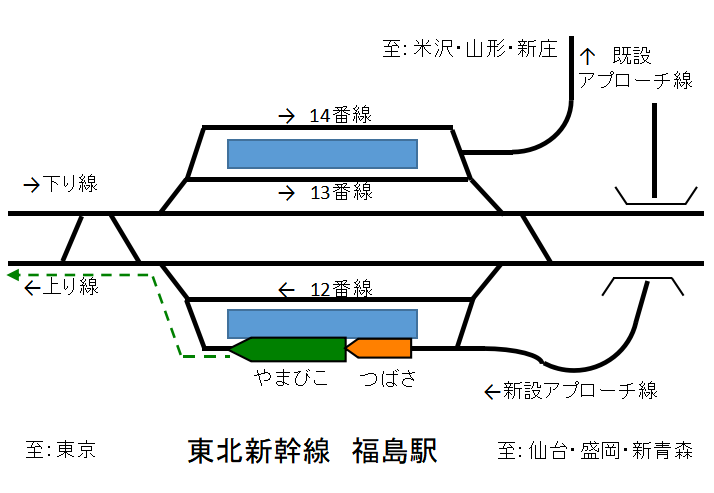
Even when Yamabiko/Tsubasa advances from Fukushima Station, they do not cross the outbound line.
Since no inbound trains will cross the outbound line, flexibility in timetable settings will be greatly improved, and the possibility of schedule disruptions spreading to Fukushima Station will be reduced.
Also, since there is only one existing approach line, it was not possible to depart from the outbound Tsubasa and arrive at the inbound Tsubasa at the same time at Fukushima Station, but it is also important to be able to do this at the same time.
After the new approach line is completed, the previous constraints may be removed, which may mean that more wings will be issued.
The train that connects to Tsubasa will stop at Yamabiko on the inbound line, and it will be on platform 11, and the trains that do not will use platform 12, which is the same as before.
This eliminates the hassle of having to check the platform where Yamabiko will stop before getting on the platform.
Local construction work at Fukushima Station , such as adding an approach line, will contribute to improving the convenience and stability of the Shinkansen, which runs across a wide area in eastern Japan.
A new approach line that took time to realize
The need for a dedicated approach line for the inbound Tsubasa seems to have been recognized within JR East, the company that operates the Shinkansen, as early as 2005 at the latest.
However, it is easy to imagine that the construction of the new approach line would be difficult, and it would take time to realize it as it was necessary to spend time considering it and wait for advances in construction technology. It is.
As shown in the diagram I created, the new approach line will have to pass under the Tohoku Shinkansen and make a sharp curve to reach the elevated platform at Fukushima Station .
Although it is not shown in the diagram, it is necessary to take a route that does not interfere with conventional railway lines running above ground.
Furthermore, on the north side of the station (on the right side in the diagram), there is a road bridge called Nishimachiko Line Bridge on Fukushima Prefectural Route 310 Niwasaka Fukushima Line, which straddles the conventional line.
The new approach line will need to cross the Niwasaka Kaido Line Bridge at a sufficient height so as not to obstruct cars passing by.
As a result, the new approach line had
not only curves but also steep uphill slopes Its slope is 33‰ (per mil), meaning that if you go 1km horizontally, you will rise 33m (the angle at which the tangent is 0.033), which is 1.89 degrees.
It's quite steep for a train, but not for a car.
However, before the uphill "Tsubasa" reaches Fukushima Station, it has already crossed a pass called "Itaya Pass" with an average slope of 33‰ between Yonezawa Station and Fukushima Station, so it is now a 33‰ uphill. Even if one is added, there should be no reason why you can't climb it.
Please see this article for information on the railway at Itaya Pass.
With its sharp curves and steep slopes, the new approach line resembles an urban expressway junction.
Since it's easier to see it in person, here's an explanation with photos.
Current status of approach line expansion work
Below, I will introduce the current status of the approach line expansion work based on photos taken by the author at the site in early August 2024.
Please note that photos are taken from public roads, sidewalks, platforms, etc.
We do not take photos in areas where access to the general public is restricted.
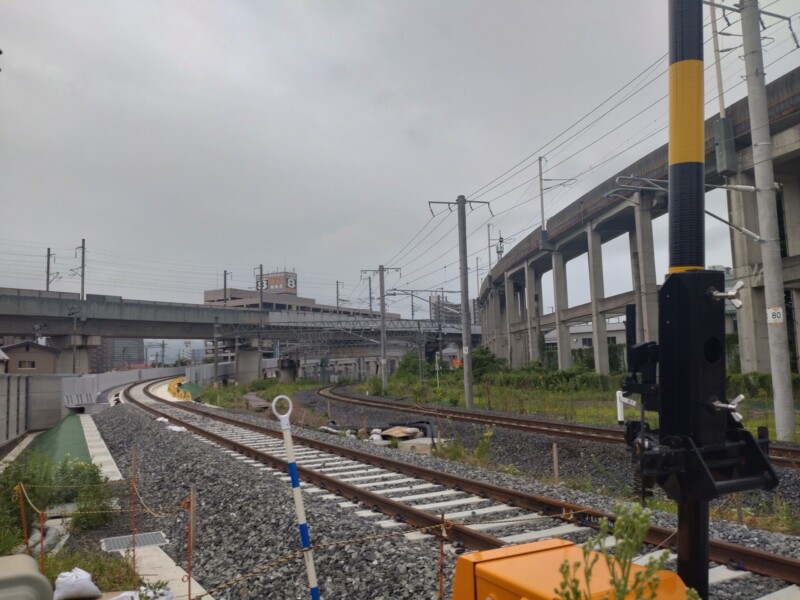
The new approach line, which branches off from the up line of the Ou Main Line, begins to gain altitude towards Fukushima Station after passing the Mikawa railroad crossing near Fukushima Station
(currently, only Ou Main Line local trains pass through the Mikawa railroad crossing). (Once the new approach line is in service, the inbound Tsubasa will also pass through it.)
The Mikawa railroad crossing is in the center of this aerial photo.
The new approach line extending to Fukushima Station in the southeast direction is already visible as of September 2024, when this article was written.
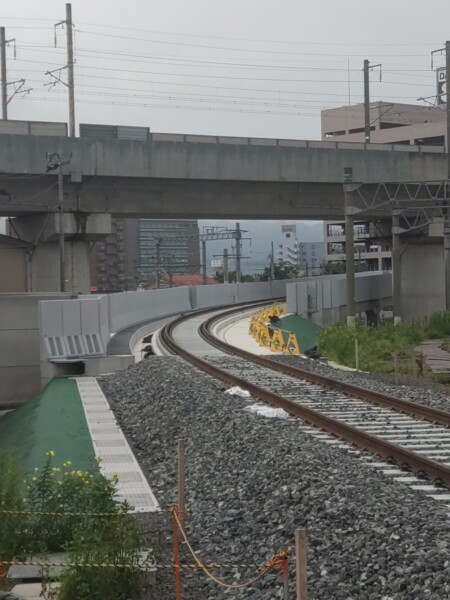
The tracks for the new approach line have already been laid, but the overhead wires that carry electricity to the vehicles have not yet been installed.
It is likely that some electrical work will be done soon.
The viaduct that passes over the new approach line is the Tohoku Shinkansen line.
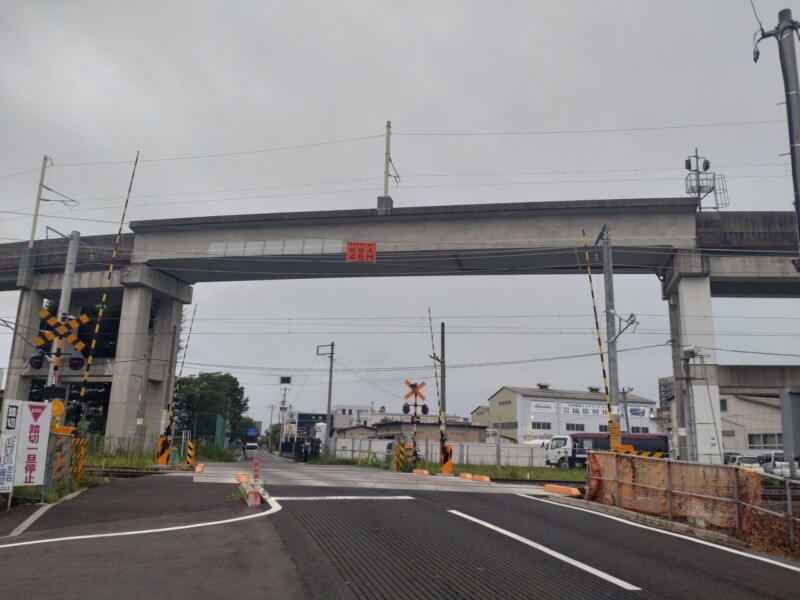
This elevated line is the current approach line.
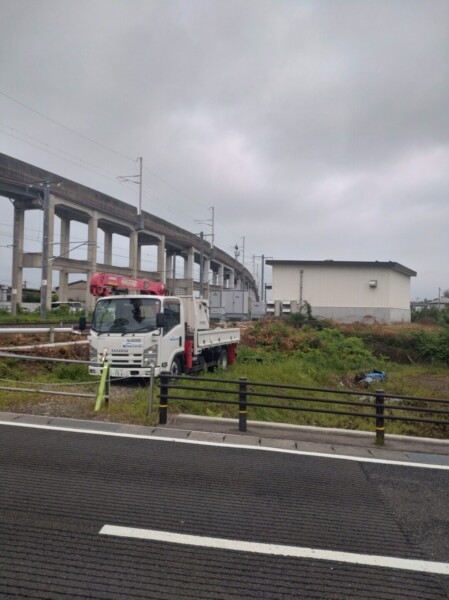
The current approach line descends gently towards Yamagata.
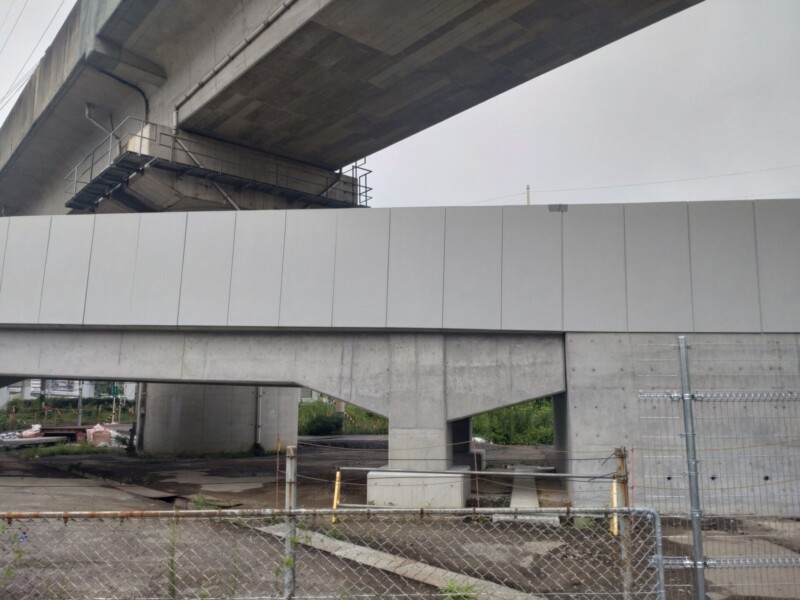
The new approach line passes under the Tohoku Shinkansen viaduct while increasing its altitude.
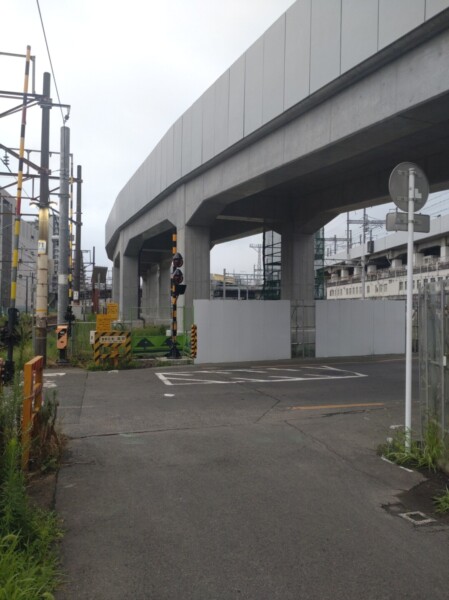
It is closest to the Tohoku Main Line at the Soneda (East) Level Crossing, the crossing for the Tohoku Main Line, Fukushima Kotsu Iizaka Line, and Abukuma Express Line.
From here, we curve further and approach the Tohoku Shinkansen tracks that we once passed through.
The cream-colored bridge that looks small in the background is the part that straddles the Niwasaka Fukushima Line Nishimachiko Line Bridge.
As you can imagine from the name Soneda (East) Railroad Crossing, Soneda Station on the Iizaka Line is right there as soon as you cross this crossing.
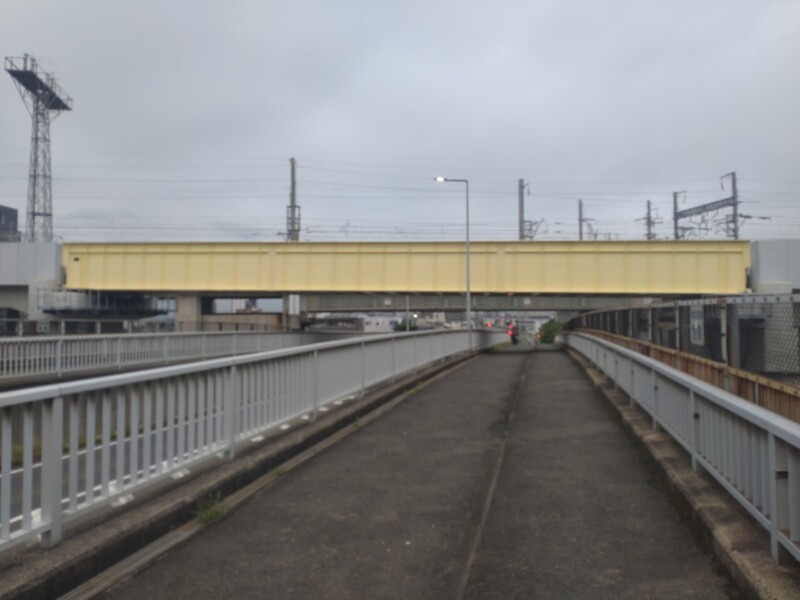
From above the Nishimachi Line Bridge, take a photo of the part that straddles the Line Bridge.

Then I headed towards Fukushima station...
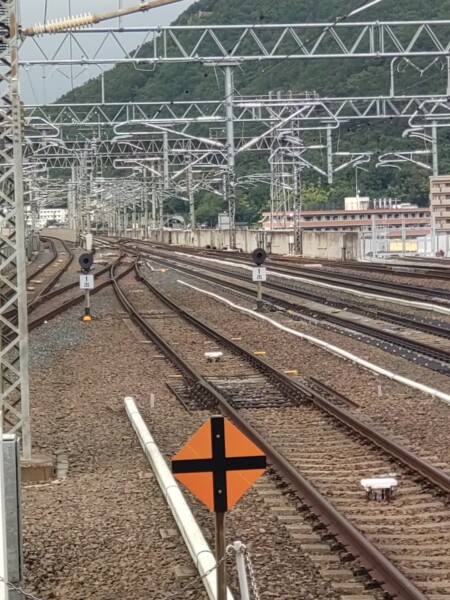
This is the part that connects to the Tohoku Shinkansen tracks (the new approach line is the track on the far right).
A chain link gate is currently in place.
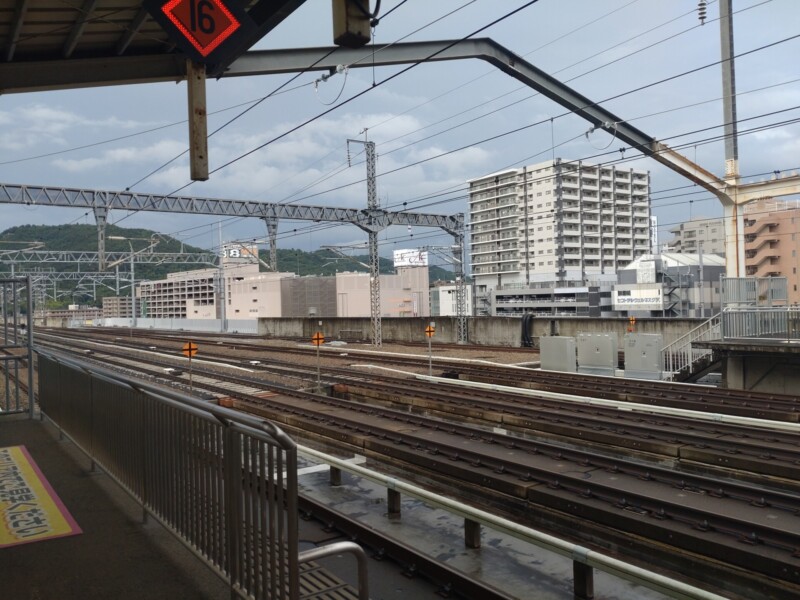
Currently, the tracks continue to platform 11, which is a spare platform.
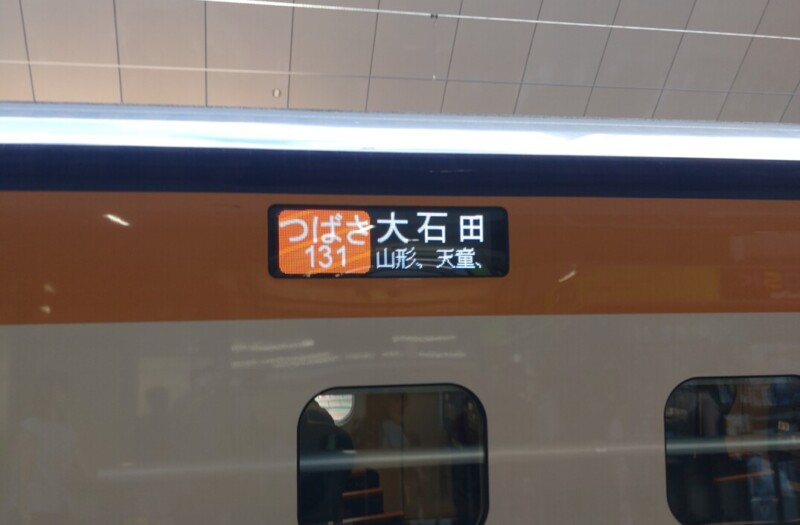
At this time (early August), the Yamagata Shinkansen was partially suspended due to the heavy rain disaster that occurred in late July, and Tsubasa, which was supposed to go to Shinjo, was instead bound for Oishida, a destination that is not usually seen. was posted.
Additionally, on the day the author was scheduled to board the Shinkansen from Fukushima Station, the Yamagata Shinkansen was significantly delayed due to a signaling problem that occurred on the Ou Main Line, and the delay also spread to the Tohoku Shinkansen, causing congestion. did.
I was able to experience firsthand the necessity of a new approach line.
summary
Work on the viaduct and tracks for the new approach line is already well underway, and it looks like trains will be able to run on it any time soon, but work on electrical equipment and other equipment is still to be done, and careful test runs will be required even after completion. Sho.
It has been announced that the new approach line is scheduled to begin use at the end of 2026.
It is likely that from the day of the JR Group's timetable revision in March 2027, the inbound "Tsubasa" commercial trains will run on this new track.
This track, just a few hundred meters long, will greatly improve the convenience and stability of Shinkansen operations in eastern Japan in the future.


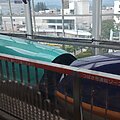



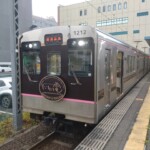
![The history of Kamiyama, which developed as a castle town and post town with hot springs [Kamiyama City, Yamagata Prefecture] Kaminoyama Castle](https://jp.neft.asia/wp-content/uploads/2023/08/22726859_m-150x150.jpg)
![Why was the Yamagata Shinkansen "Tsubasa" born on the mini Shinkansen? [Yamagata Prefecture] 3106705_l](https://jp.neft.asia/wp-content/uploads/2024/05/3106705_l-150x150.jpg)
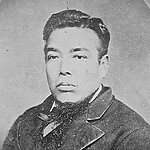

![Railways at Itaya Pass, which took on steep slopes and harsh climates [Fukushima Prefecture and Yamagata Prefecture] 26554002_l](https://jp.neft.asia/wp-content/uploads/2024/07/26554002_l-150x150.jpg)

![[Yonezawa City, Yamagata Prefecture] Visit a hot spring connected to the Uesugi family of the Yonezawa Domain 1530_Onogawa Onsen Foot bath](https://jp.neft.asia/wp-content/uploads/2023/05/4ed5d5851f7d92ca3b0ebed3220d6418-150x150.jpg)
![It's so big that the main castle is hazy and you can't see! Yamagata Castle, known as Kasumi Castle [Yamagata Prefecture] Yamagata Castle's main castle, Ichimonji gate](https://jp.neft.asia/wp-content/uploads/2023/08/3261071_m-150x150.jpg)
